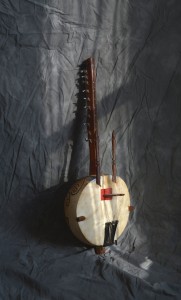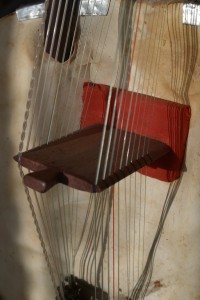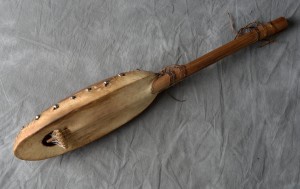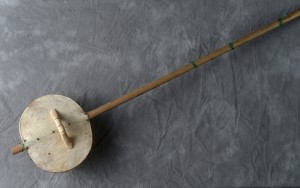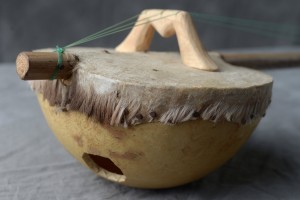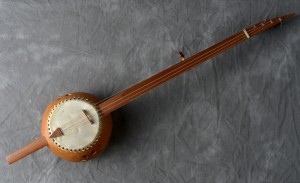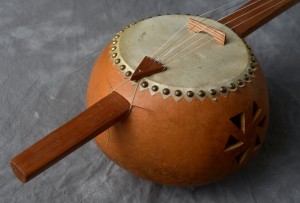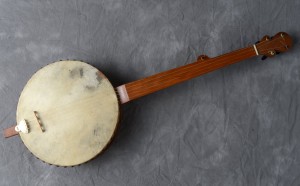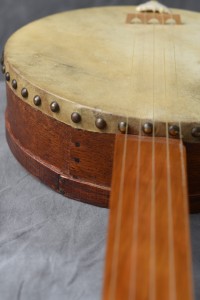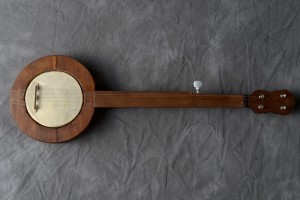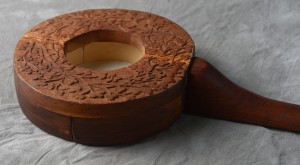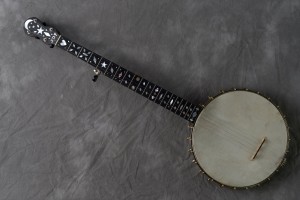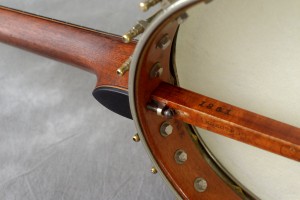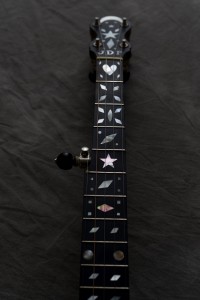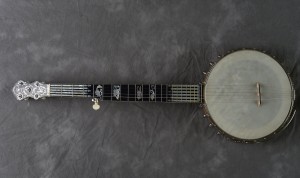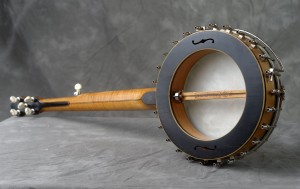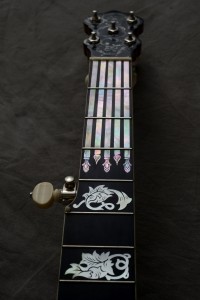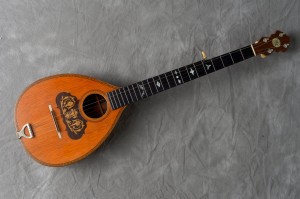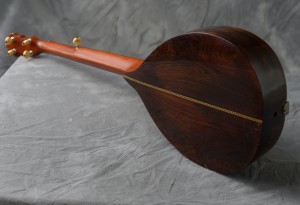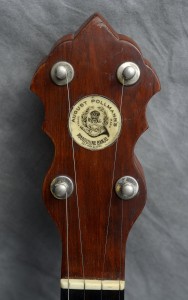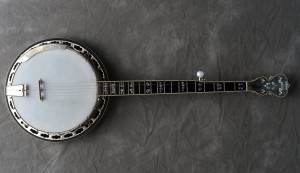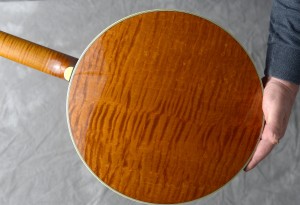The Artist
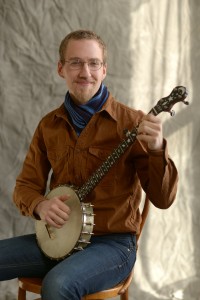
Seth Swingle
Seth Swingle is an award-winning musician and scholar. A curious and dedicated practitioner of traditional music, he has studied Southern banjo styles with noted folklorist Mike Seeger, given talks and performances of banjo history at universities throughout the South, and is 2-time Virginia State Banjo Champion. He can pick, strum, pluck, and beat upon the banjo in a half-dozen archaic and modern banjo styles and in over a dozen tunings. His new CD, Solo 5- & 6-String Banjo, features Seth playing everything from intricate Irish reels to 19th century waltzes to fiery Appalachian breakdowns. He explains, “the banjo was once the universal American instrument, played by men and women of every class. People used the banjo as a courting instrument, a dance instrument, a stage instrument, a parlor instrument. We have this image today of the banjo as a rural, Appalachian, white instrument, but it was played almost exclusively by African-Americans until the 1830’s, was hugely popular in the urban North-East as early as the 1840’s, and was a respectable middle-class instrument by the 1890’s.” Seth brings the wide and varied history of the banjo to life on stage with music that stretches across the centuries to the earliest transcriptions of banjo music and even to the banjo’s roots in W. Africa.
One of Seth’s biggest musical influences was the late Mike Seeger. An indefatigable teacher, musician, field recorder and folklorist, Seeger influenced generations of old-time and traditional musicians. Through a year-long Virginia Foundation for the Humanities Folklife Apprenticeship, Seth was able to study many Southern banjo styles with him. This apprenticeship instilled in Seth a deep appreciation for the art of performing while informing.
In his search to understand the banjo’s history, Seth has also studied the n’goni, a banjo ancestor, with griot Cheick Hamala Diabaté. A Mandé griot (a trained member of the hereditary musician class) from Mali, Cheick is one of the foremost representatives of traditional Malian music in America, and has explored banjo/n’goni connections with Bob Carlin on their Grammy-nominated album, From Mali To America. As his apprentice, Seth has performed with Cheick at the Kennedy Center, Merlefest, and the 1st Black Banjo Gathering.
After graduating from the University of Chicago with a Bachelor’s Degree in Middle Eastern History, Seth received a Fulbright Scholarship to study traditional Mandé music in Mali, W. Africa. In addition to the n’goni, Seth became proficient on the kora, a 21-string African harp capable of complex counterpoint and shimmering cascades of notes. His fluency in French and Bambara have allowed him to immerse himself in Malian society and communicate and play with working musicians throughout Mali. He has performed (in Bambara) at the Festival sur le Niger and on Malian national television.
As an academic and musician, Seth has been an invited lecturer and performer at The Banjo Collectors’ Gathering, the Center for the Study of the American South at UNC Chapel Hill, Appalachian State University, and Virginia Wesleyan College. An unabashed frequenter of banjo contests, he has won numerous ribbons including first place in the Mt. Airy Fiddlers Convention and Appalachian String-Band Festival youth category, two consecutive years as Virginia State Banjo Champion, and has been a finalist in the Clifftop banjo contest.
When not touring, Seth divides his time between Central Virginia and Mali, West Africa.
The Instruments
Malian kora:
The kora is a 21-stringed harp from W. Africa. Originally invented in the Gambia roughly three centuries ago, the kora has since spread to Guinea, Senegal and Mali in W. Africa, and now everywhere in the world. It is played with two thumbs and two forefingers, which allows for counterpoint on a single instrument, i.e. playing multiple interrelated melodies at the same time. The best players (Toumani Diabaté, Batrou Sékou Kouyaté, Amadou Bansang Jobarteh and others) create dense layers of melody and accompaniment, weaving together improvised solos and bass patterns into a hypnotic, introspective musical tapestry. The kora is equally at home as a solo, duo, or group instrument.
Malian n’goni:
The n’goni is a 3- to 8-stringed lute common to many ethnic groups throughout W. Africa. This specific instrument comes from the Mandé in Mali, a country historically known for its n’goni tradition. As this is a modern n’goni, it has another 4 strings added to the traditional 4, allowing for greater range and expression. Until the 20th century, the n’goni was the dominant stringed instrument in Mali, and it’s still one of the most popular.
Gambian akonting:
The akonting is a banjo ancestor from Sénégambia on the coast of W. Africa. As you can see, the construction is quite similar to that of a gourd banjo (see pic below). Like gourd banjos, the akonting has a neck pushed through a hide-covered gourd, with a floating wooden bridge held down by string tension. It also has a short “thumb string” similar to a banjo’s and is played with a down-stroke motion similar to American clawhammer/stroke style playing which was descended from African playing styles.
Pete Ross gourd banjo:
This is a recreation/reinterpretation of the earliest banjos, which were made from gourds. It was made by Pete Ross of Jubilee Gourd Banjos in Baltimore, MD. Having apprentice with the late Scott Didlake, the progenitor of modern gourd-banjo making, Pete has become the world’s foremost authority on the history and construction of these, the earliest banjos. His instruments appear in numerous museums; he was also a curator of the recent exhibit Making Music: The Banjo in Baltimore and Beyond at the Baltimore Musuem of Industry. In addition to exact reproductions of period instruments, he also offers several modern interpretations of the gourd banjo for sale on his website, banjopete.com.
Jeff Menzies tack-head banjo:
This is a recreation of an early stage in the banjo’s physical evolution, c. mid-1800’s. It was made by Canadian sculptor/instrument maker Jeff Menzies, and incorporates what looks to be an antique grain-sifter for the pot (the round part of the banjo). The skin head is affixed with metal tacks, the only metal components of this banjo. His website is jeffreymenzies.com
No-name mountain banjo:
Here’s one of the many approaches to making a banjo yourself. So-called “mountain banjos” come in all sizes, but tend to have small hide heads and are usually fretless. Some of the best were made by the late Frank Proffitt, though they were made all over the South. Aside from its small size, this banjo has a beautiful, hand-carved back. Construction techniques for these banjos have changed very little in the last 100+ years, so it’s hard to know when this one was made, or where, or by whom.
Fairbanks “Electric” (JDP):
This is a short scale-length banjo made by A.C. Fairbanks and Sons in Boston, Mass., probably in the early 1890’s. Fairbanks was one of several Boston-based banjo manufacturers in the late 19th/early 20th centuries who crafted some of the finest banjos of the ”Golden Age” of banjo. The Fairbanks Electric banjo (named for the patented “Electric” tone-ring) was a predecessor to the famed “Whyte Laydie,” one of the most coveted in old-time music. Very little of the inlay was done in the factory; I guess the enigmatic JDP wanted more of the folk-art look. This could also have been a lady’s parlor instrument, given its smaller than average size.
Pete Ross custom 6-string:
This is, by far, the fanciest banjo I’ve ever owned. I’d wanted a 6-string banjo for years and decided to commission one, since I hadn’t seen or heard any that suited me. I wanted a rich, even tone overall so I bought a vintage pot (the round part of the banjo), a Bacon FF Professional with internal resonator. These are some of the most consistently nice-sounding banjos ever made, and the additional volume from the internal resonator is nice in a band or jam context, too. My friend Pete Ross of Jubilee Gourd Banjos agreed to craft a neck to fit the pot; little did I realize how exquisite the finished product would turn out to be. With Pete’s guidance, I chose several vintage inlay patterns which he then modified to fit the odd, 6-string neck. Untold hours of sawing, gluing, inlaying and engraving later, I had a nicer banjo than I’d ever imagined.
Pollman mandoline-banjo:
Half banjo, half octave mandolin, this odd instrument is one of the many late 19th century hybrid banjo instruments. While guitar-, mandolin-, and ukulele-banjos married their respective necks to banjo bodies, Pollman attached a five-string banjo neck to an octave mandolin body to create an instrument with a distinctively mellow, lute-like sound. According to Bollman and Gura, Augustus Pollman bought the patent for these intriguing instruments from Professor Antonio Bini of Brooklyn, New York.
Deering Calico:
This is a modern banjo made in California by the Deering Banjo Company. It has a closed back (a resonator) which projects the banjo’s sound forward, as well as a heavy 6-pound bronze tone-ring, which gives it a complex tone. Banjos of this type are usually played with metal finger-picks and a plastic thumb-pick, which also augment the banjo’s volume. I love the lush tone of this banjo from the lowest to highest note and, so far, I haven’t been tempted to get another resonator banjo! Check out www.deeringbanjos.com for this and other fine banjos.
Links
-
What exactly IS old-time music?
Well, I can’t explain it any better than Mike Seeger could, so check out his definitive answer at http://mikeseeger.info/music.html - Smakula Fretted Instruments – For all your vintage instrument needs. Banjos are a particular specialty.
- Jubilee Gourd Banjos – The finest gourd banjos available.
- Deering Banjos – Well-crafted, contemporary banjos, made in America.
- Béla Fleck, our 5-string god.
- Bobby Reed – Professional recording, mixing and mastering and many, many microphones.
- WTJU.net – Community radio excellence, now streaming everywhere in the world.
- Toumani Diabaté – A brilliant living master of the 21-string kora.
- Cora Connection – A great place to learn about and buy recordings of the kora.
Nice places to buy music:
